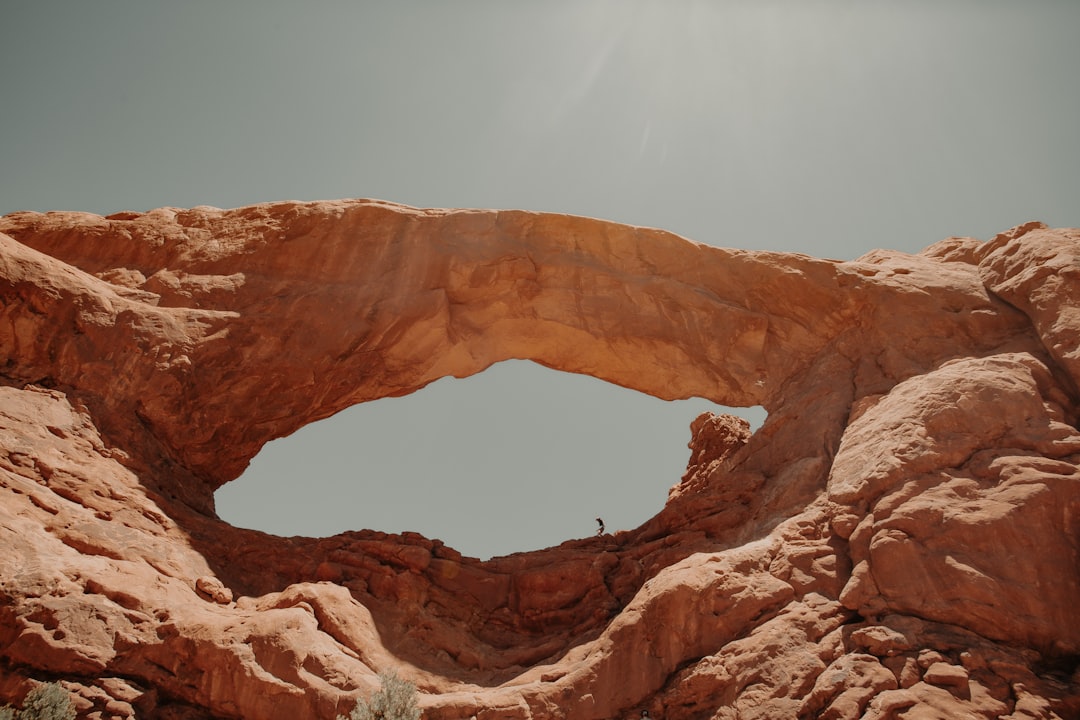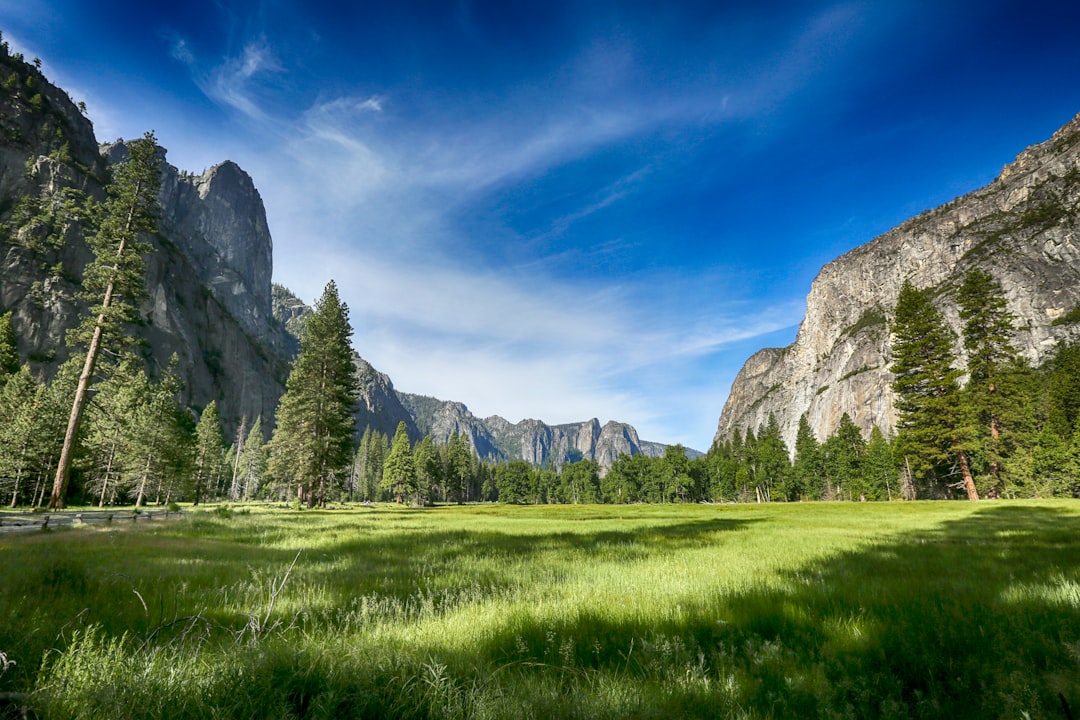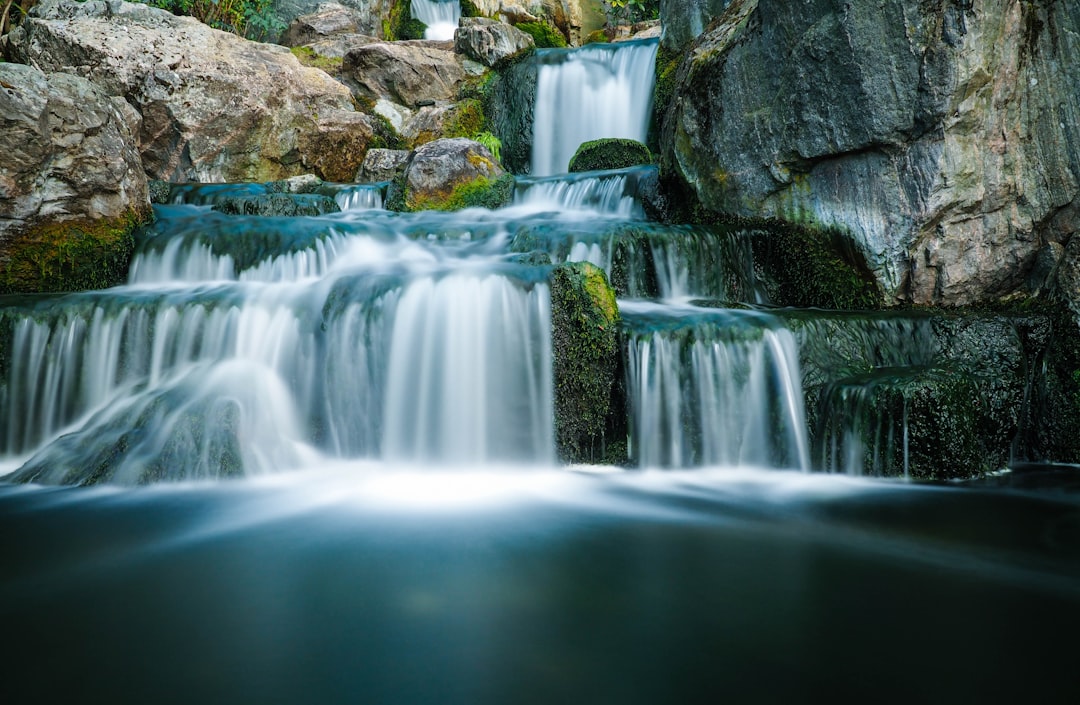Off the Beaten Path: Discovering the Hidden Gems of America’s National Parks
Off the Beaten Path: Discovering the Hidden Gems of America's National Parks - Get Away From the Crowds at Canyonlands

With over 337,000 acres of rugged red rock landscape carved by the Colorado and Green Rivers, Canyonlands National Park in southeastern Utah offers some of the most stunning scenery in the American Southwest. But with only 730,000 visitors in 2019 compared to Zion's nearly 4.5 million, Canyonlands remains surprisingly crowd-free.
By avoiding the popular Island in the Sky section and exploring the remote Maze and Needles districts, you're likely to have breathtaking canyon vistas and ancient Puebloan cliff dwellings practically to yourself. The 100-mile White Rim Road loops around and below the Island in the Sky mesa top, connecting these less-visited areas with iconic landmarks like Musselman Arch and Washer Woman Arch. You’ll feel like you’ve got the whole park to yourself!
Descending the steep switchbacks of the Shafer Trail on a guided tour allows you to experience the park from the bottom up. Stop to take in the stratified layers of rock and wander through cabin ruins left behind by cowboys in the 19th century. Then set up camp along the banks of the Green River, your simple tent dwarfed by the towering mesas overhead.
From the Needles district, tackle the 8.6 mile Chesler Park Loop, which winds through a fantasy landscape of red and white sandstone spires with names like the Jetsons and Snoopy. Scramble up the Joint Trail for unobstructed panoramas of the Abajo Mountains. Or make the 0.8 mile hike to Cave Spring, featuring the remains of a 19th century cowboy camp and dazzling rock art left by ancestral Puebloan peoples.
For true wilderness, continue another 3 miles down Salt Creek to wander among the tafoni, bulbous hollows sculpted into the canyon walls by thousands of years of weathering. The crowds peter out beyond Cave Spring, leaving this oasis of desert willows and cottonwoods all to yourself.
What else is in this post?
- Off the Beaten Path: Discovering the Hidden Gems of America's National Parks - Get Away From the Crowds at Canyonlands
- Off the Beaten Path: Discovering the Hidden Gems of America's National Parks - See the Other Side of Yosemite
- Off the Beaten Path: Discovering the Hidden Gems of America's National Parks - Spot Secret Waterfalls in Great Smoky Mountains
- Off the Beaten Path: Discovering the Hidden Gems of America's National Parks - Find Solitude in Alaska's Wrangell-St. Elias
- Off the Beaten Path: Discovering the Hidden Gems of America's National Parks - Paddle Untouched Lakes in Voyageurs
- Off the Beaten Path: Discovering the Hidden Gems of America's National Parks - Experience Death Valley's Overlooked Oases
Off the Beaten Path: Discovering the Hidden Gems of America's National Parks - See the Other Side of Yosemite

Yosemite National Park conjures up images of breathtaking waterfalls, sheer granite cliffs, and endless crowds, with hotspots like Half Dome, El Capitan, and Yosemite Valley choked with tourists. But the park’s reputation belies an overlooked side that offers secluded alpine lakes, verdant meadows, and solitary hiking trails.
Venture into Yosemite’s northwest corner and you’ll discover the Hetch Hetchy region, an area the Native people revered for its abundance of edible plants and shimmering Tuolumne River. After a controversial dam project in the early 20th century, the valley became home to a reservoir and source of drinking water for San Francisco. Carefully managed hiking trails now allow visitors to experience Hetch Hetchy’s granite walls and pristine waterfalls without compromising the water supply.
The 8-mile round trip hike to Rancheria Falls follows the reservoir before climbing wooden ladders up a rocky gorge. As other hikers turn back, press on another mile up the canyon to reach the thundering cascade of Tiltill Falls, a hidden gem few tourists glimpse. Backpackers can traverse a 33-mile section of the Pacific Crest Trail from Hetch Hetchy traversing peaceful meadows and alpine lakes like Lake Vernon tucked below soaring Cathedral Peak.
No crowds congest Wapama Falls, a roaring 5-storey cascade that’s a spiritual experience to witness. As the recently restored O’Shaughnessy Dam comes into view across the crystalline reservoir, it’s easy to understand how this valley captivated John Muir with its unspoiled splendor. While hotspots teem with sightseers only steps apart, Hetch Hetchy offers the elbow room and serenity that Muir sought.
Yosemite’s high country presents another crowd-free side of the park. The 16-mile roundtrip hike to the Twin Lakes traces the course of the Merced River through flower-filled meadows with panoramic views of Half Dome. Backpack 15 miles along the Clouds Rest Trail to camp above tree line at Sunrise Lakes, watching the glowing alpenglow reflect off the Cathedral Range at sunset. Summit Mt. Hoffman, an unheralded peak that stands only slightly shorter than the more famous Half Dome. From the 10,850-foot summit, take in a striking panorama of Yosemite’s icons from this different vantage point.
Off the Beaten Path: Discovering the Hidden Gems of America's National Parks - Spot Secret Waterfalls in Great Smoky Mountains

Nestled in the lush green valleys of the Great Smoky Mountains, countless cascades and waterfalls tumble down the mountainsides. Iconic falls like Grotto and Laurel draw crowds wielding selfie sticks and clogging the overlooks. But it’s surprisingly easy to escape the hordes and find secluded falls hidden up remote hollows and on unnamed creeks.
One such secret is Place of a Thousand Drips tucked high up Dry Prong Trail. As the forest opens up, this delicate veil of a waterfall appears, its thin stream dispersed into countless drips scattering over the mossy boulders. Listen closely and you’ll hear the amazing number of different pitches in its dripping chorus. Its remote location far from any trailheads keeps it off the radar of most visitors.
For a true hidden find, trek up the Little Bottoms Trail, crossing several creek beds along the way. About 2 miles in, an unmarked side path on the right leads through thickets of rhododendron, depositing you in front of an unnamed 25-foot waterfall. This beauty cascades down a V-shaped rock cleft draped in velvety emerald moss. Its plunge pool reflects the surrounding forest like a natural mirror. Don’t expect to have company – only the most intrepid will happen upon this secret gem.
Up Blanket Mountain, the obscurity of Stan Murray Falls safeguards its pristine wilderness. Nearly 5 miles up the trail, this wispy cascade tumbles down a steep slope dense with hemlocks and white pines. Standing at the base of the falls inhaling its cool mist, you’ll be astonished that not another soul shares this spectacle.
Twenty Mile has no official trail leading to it. But following an overgrown path from Twenty Mile Ranger Station will reward you with breathtaking views of this slender silver thread spilling some 200 feet over the mountainside. Count yourself lucky if you catch a sunbeam piercing the canopy to illuminate its delicate curtain. Its steep descent has kept it out of both sight and mind for most hikers.
Off the Beaten Path: Discovering the Hidden Gems of America's National Parks - Find Solitude in Alaska's Wrangell-St. Elias
With over 13 million acres, Wrangell-St. Elias National Park in eastern Alaska is the largest national park in the United States. Yet this staggering wilderness sees only a tiny fraction of visitors compared to marquee parks like Yellowstone and Yosemite. Lacking major roads and infrastructure, Wrangell-St. Elias epitomizes untamed and uncrowded wilderness perfect for escaping the masses.
Venture down any one of the few primitive dirt tracks like the Nabesna Road or McCarthy Road and you’ll feel like you’re exploring lands that time forgot. Massive ice fields, rugged peaks, and broad valleys contain reminders of the miners and homesteaders who once tried to tame this landscape. But evidence of their fleeting presence only enhances the sense that you’ve stepped into a vast, untouched terrain.
For Milwaukee native Tori Tragis, her inaugural visit to Wrangell-St. Elias opened her eyes to the meaning of open space. "I’d seen wide-open plains, but nothing prepared me for the enormity of the vistas, with the eye able to wander endlessly over glaciated peaks without any sign of humanity."
Backpacker Lindsey Thompson found the same thing on her week-long trek along the coastline of scenic Glacier Bay. "Hiking along the rocky beaches with only the cries of seabirds to break the silence, I realized this landscape wasn't meant for crowds."
This raw, untrammeled beauty imprints indelibly on your heart and mind. "Now when I return to the crowded city, I close my eyes and I’m transported back to the serenity of the tundra, with the space and silence to finally hear yourself think," shares Chicago native Peter Wells after his first Wrangell-St. Elias adventure.
Off the Beaten Path: Discovering the Hidden Gems of America's National Parks - Paddle Untouched Lakes in Voyageurs
Stretching along the border between Minnesota and Canada, Voyageurs National Park remains one of the country's lesser-known gems. Yet for those who crave unspoiled wilderness and serenity, Voyageurs delivers in spades. Its interconnected waterways hold hundreds of uninhabited islands and bays waiting to be explored by canoe or kayak.
"I'd never paddled anywhere so quiet and pristine," shares 27-year-old Jennie Larson after her recent solo kayaking trip. "Many days I didn't see a soul, just loons diving for fish and eagles soaring overhead." With over 84,000 acres of water, it's easy to find a lake or inlet far from the popular routes.
The park offers more than just scenery. History buff Alex Reed was drawn by the old logging camps and gold rush relics from the park's past. "It was incredible paddling up to an abandoned cabin left from the fur trade era, almost like stepping into the past." Others come for the world-class fishing. "The walleye bite was nonstop, and catching my first 20-inch northern pike was a total thrill," reports lifelong angler Dale Harris.
While popular lakes like Rainy and Kabetogama attract more visitors, hidden gems remain. Red Rock Lake offers a maze of uninhabited islands and pristine beaches to claim for an afternoon. Paddle the remote Mukooda Lake chain, where loons and moose abound. On Cruiser Lake, it's just you and the call of the common loon.
For Houle Lake, a 6 mile paddle across Sand Point Lake culminates at the ruins of a historic CCC camp and the chance to have an entire lakeshore to yourself. Jake Peters relished having the primitive campsites on Rush Bay all to himself. "After two days of not seeing a single other person, I felt like I had truly escaped into the wilderness."
Off the Beaten Path: Discovering the Hidden Gems of America's National Parks - Experience Death Valley's Overlooked Oases
With temperatures routinely topping 120 degrees Fahrenheit, Death Valley holds the record for the hottest place on earth. Yet amidst the barren desert landscape, a handful of oases offer pockets of life and greenery for parched travelers to replenish themselves.
Most visitors stick to the paved roads and established camps with amenities. But forging off trail into the backcountry allows you to discover small springs that give rise to fan palm oases and pockets of mesquite and acacia trees. Their existence seems even more miraculous given the harsh and arid environment that surrounds them.
"I was blown away to come across Bennett Spring in a narrow canyon, with palms and wildflowers clustered around a tiny trickling spring," shares 27-year-old hiker Jen Lee. "It was a vivid reminder that even the most parched places contain hidden wells of life if you take the time to search them out."
The 0.3 mile roundtrip hike to Keane Wonder Mine leads to another emerald gem. Here the rusty remnants of an abandoned gold rush mine sit juxtaposed against a lush palm grove. Many describe it as a desert version of Brigadoon, the mythical Scottish village that materializes out of the mists.
For Cody Simpson, finding secluded Mesquite Spring was the most welcome relief after a grueling 35-mile trek. "When I saw those trees rising from the desert floor, it was like a mirage. I tore off my pack and just laid underneath the palms listening to the trickle of the spring."
Don't expect amenities, as these life-giving havens have little infrastructure. But their primitive beauty offers the chance to experience Death Valley's oases as early settlers did - as natural sanctuaries that sustained life in an unforgiving land.
Pack a filter or collapsible jug to collect the spring water. Sit quietly beneath the shade of gangly palms and listen for the rustle of wildlife that these oases harbor. Forget about cell service or social media and immerse yourself in the solace of the desert.
As Jen reflects, "These scattered oases let you drink in the preciousness of life and water in a place where both seem impossible. Finding them takes effort, but that makes arriving at these secluded gems all the more sweet."
